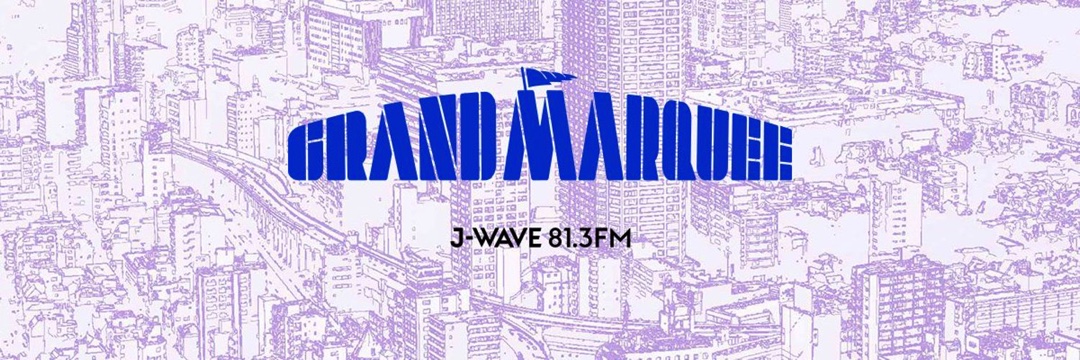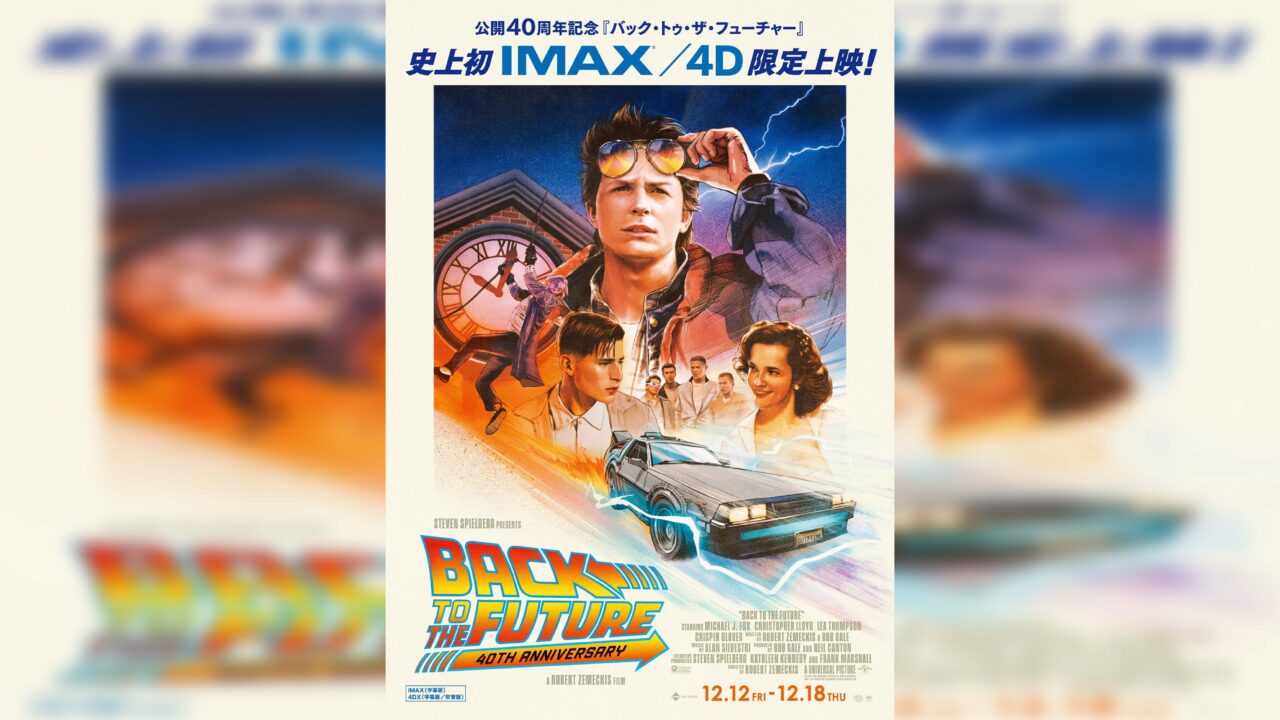A circle of friends connected by goo touch! The “FIST BUMP” corner of the radio program “GRAND MARQUEE” features people who live and enjoy Tokyo in a relay format.
On September 28, Masanao Amano, editor-in-chief of the magazines “Kikan esu” and “Small esu”, was introduced by Otomo Katsuhiro researcher Junya Suzuki. While working on a magazine that introduces illustrators from a wide range of genres, we asked Mr. Amano, who was in charge of Yusuke Nakamura’s art collection of ASIAN KUNG-FU GENERATION’s CD jackets, about the birth of “S” Quarterly and “Small S,” and the history of collaboration between illustration and music.
INDEX
How “Kikan esu” a magazine covering illustrations, was created
Celeina(MC): Could you explain again what kind of magazines “Kikan esu” and “Small esu” are, which overlap with the history of illustration in Japan?
Amano: “Kikan esu” is a magazine that covers illustrations, manga, and anime, and its sister magazine “Small esu” is a book that elementary and junior high school students read, which recommends “Let’s draw pictures” to young people who want to draw pictures.
Takano (MC): What kind of illustrators are featured in “Kikan esu”?
Amano: For example, from those who design characters for games and animation to those who draw pictures for picture books, advertisements, CD jackets, videos, and music videos. Most of the people who draw the visuals participate.
Celeina:How did you become interested in illustration?
Amano: I originally worked for a publishing company that produced a magazine called “Bijutsu Techo,” which mainly dealt with contemporary art. There, I found that students who wanted to draw pictures were surprisingly influenced by manga and anime, not contemporary art, and there was momentum to introduce such fields to aspiring artists. I felt that illustration, in particular, is similar to fine art in that it condenses the stories and themes expressed in manga and anime into a single picture as a worldview, so I decided to actively introduce it to them.
Takano: So it is not because you yourself like illustrations so much, but rather because you see the trend of the times and decided to engage in this kind of activity?
Amano: Yes, that’s right. It started as a magazine to cover manga artists, but as the times were changing, great talent was gathering among illustrators. So I wanted to focus not only on manga artists, but also on illustrators as expressive people.
INDEX
Combination of illustration and music
Celeina:I picked up some of Amano-san’s work related to music. First of all, you were in charge of editing the art book of Yusuke Nakamura, the artist who created the CD jackets for Ajikan, weren’t you?
Originally, Mr. Nakamura was a music lover, and since he was a student, he often drew flyers and other music-related things. When Mr. Nakamura met Ajikan, they were just starting out together, and the first time he went to an Ajikan concert, there were only a few people in the audience. But from that time on, Mr. Nakamura liked Ajikan, and Mr. Goto of Ajikan also liked Mr. Nakamura’s drawings. They talked to each other about the possibility of being in charge of the jackets for their albums when they came out, and Mr. Nakamura ended up drawing the jackets for their major label debut mini-album “Hōkai Amplifier” and their first album “Kimi Tsunagi Five M”. At the same time that Ajikan was making its major debut, Mr. Nakamura also became known to the world as an illustrator, and we watched the development of both of them in such a way that they became well known.
I had a connection with Mr. Nakamura when he was a student and contributed illustrations to our magazine (“Comickers,” the predecessor of “Kikan esu”). I saw the jackets of Ajikan painted by Mr. Nakamura at a record store and thought, “I want to interview him!”. I was deeply impressed by the connection that when our own magazine came out and developed, both Mr. Nakamura and Ajikan became known to the world, and eventually published a book of their paintings. Reviewing your work again, I was struck by the ideal collaboration between music and painting.

Takano: If you say so, it is indeed a very famous combination of illustration and music.
Celeina: Typical!
Takano:In some aspects, music jackets have become a medium or a place for illustrators to showcase their work.
Celeina:Amano-san’s editorial department has also published an animation book that delves into the process of completing “Baby I love you, man,” a special animation directed by Rie Matsumoto and with a theme song written by BUMP OF CHICKEN for Lotte’s 70th anniversary. You are also in charge of an illustration book and next month’s exhibition by illustrator Chachagoma, who has created illustrations for music videos and goods of very popular singers such as Mafumafu and Amatsuki.

INDEX
Cross-culture between illustration and music is unique to Japan
Takano: I would like to ask you about vocaloid culture.
Amano: In terms of music and visuals, MTV-style music videos with musicians performing have been the mainstream, and there have always been works using animation, such as the collaboration between BUMP and Matsumoto. Apart from such projects, at some point it became easier for grassroots, creative people using the Internet to present their works. There, I think that because it was originally Vocaloid that sang, there was a feeling that it would be better to create a character for the work or ask an illustrator to draw a visual for it, rather than having myself appear and play in the video, so that the world of the song could be conveyed more. In Japan, the culture of manga, anime, and illustrations is very prevalent, so I wanted to express the worldview of the song through images featuring such characters. I thought it would be possible to embody the world of the song more faithfully than my own image. I think this trend has continued to develop in the Vocaloid culture, which is why we are where we are today.
Although Mafumafu showed up himself and even participated in the Kohaku Uta Gassen, he still ask Chachagoma to do his illustrations, and that relationship has continued for a long time. Chachagoma will be holding an exhibition in October, and many people have come to know Chachagoma’s art from the music. Perhaps the idea that the characters can represent the world of the music is connected to the current trend of VTubers, where the characters act as avatars.

Celeina:Because illustrators and people doing music have connected and created a bridge between the two, fans can come and go in either direction, so it seems like the field is getting bigger and bigger.
Amano: That’s right. Since the fans of both parties are combined, that’s another big thing.
INDEX
Works are born from a “desire to connect” and “empathy”.
Celeina:I have heard that the age range of this culture is decreasing.
Amano: When we talk to the younger generation who contribute illustrations to our magazine, they have been watching Vocaloid videos and playing Proseka (Project Sekai) since they were in elementary school. Since they have been watching such things since they were in elementary school, and especially since there is a culture of “I tried singing it,” it is easy for them to think about trying it themselves from a younger age. They try singing popular songs themselves and start presenting them. So, junior high school students who draw pictures and junior high school students who sing on “I tried singing” get together because they are in the same age group and have the same interests, and they start releasing their own music videos. That kind of movement is quite active.
Celeina:Is that happening? That’s amazing! It will be even more amazing when those kids become adults, won’t it?
Takano: If they have the experience of thinking up illustrations and presenting them since junior high school, or making music because they want to become DTMers in the future, they are going to be amazing in the future.
Amano: It is impossible for junior high school students to perform at live houses as a personal activity, but they can upload their works to the Internet. I think this is another major reason for its development.
Celeina:I think you have been in contact with illustrators and people who draw illustrations as a hobby for a long time, but have you seen any changes over time?
Amano: Well, in the 1980s, everyone was looking at the same things, so there were people who wanted to stand out from the crowd or do something different and stand out from the crowd. But nowadays, there is so much information and things that we don’t see the same things anymore. So, rather than the desire to do something different, I think the joy of sympathy that there are people with the same interests is greater, and people are more motivated to share their feelings by sympathizing and connecting with others who have the same interests. It has always been possible to make friends through music or painting, but now I think the desire to connect has become especially strong.
Celeina: So it’s “wanting to connect” and “empathy”.
Amano: That’s right.
Celeina: Now then, I asked Amano-san to choose a song that he would like everyone to listen to at this time. Could you tell us why you chose the song?
Amano:This is a Western song, but there was a person from an American company who told me that he wanted to expand my activities of introducing illustrations to the world, and he invited me to come to the U.S. alone. At the time, I was thinking that my illustrations were going to spread around the world, so it is a very memorable and emotional song.
Celeina:Then please introduce the song.
Amano: “Tô Voltando” by Simone.
INDEX
The arrival of the age when illustrators can send out their own messages
Celeina: We have selected “Tô Voltando” by Simone, a song by Masanao Amano, the editor-in-chief of “Kikan esu” magazine and “Small esu” magazine. There is one work that you have been involved in that caught my attention. Ai Yazawa did the illustration for the Japanese jacket of Courtney Love’s album “America’s Sweetheart.
Amano:Yes. Courtney enjoyed reading Ai Yazawa’s manga released in the U.S. with her daughter, and she was a fan. At the time, she wanted to create her own alter ego character, like David Bowie’s “The Rise and Fall of Ziggy Stardust and the Spiders from Mars” , and she thought that Ai Yazawa was the person to design it. She was inspired by the idea. So American publisher who handles Ms. Yazawa’s manga contacted me because I was acquainted with them. So I took Ms. Yazawa and went to introduce her to Courtney Love at the hotel where she was staying when she came to Japan. Anyway, Courtney talked about her concept with machine gun talk, and since Mr. Yazawa also liked Courtney, we both said, “Let’s draw! They were so excited. Courtney gave her cell phone number to Ms. Yazawa and told her to call her anytime.
Takano: Isn’t that amazing?
Celeina: Thanks to Mr. Amano, we have this jacket.

Celeina:We have heard a lot about you, Amano-san, but how do you think the illustration industry will change in the future?
Amano: Until now, illustrators were often asked to do “illustrations” for novels or something like that, and they were in charge of a certain part of the media. But I feel that it is becoming more and more exciting, and from now on, illustrators will be able to send out their own messages, get their works out into the world, and expand and grow from being in charge of a partial piece of media.
Takano: It’s like everyone is coming closer to the illustrator’s creativity, isn’t it?
Celeina:I am looking forward to seeing the illustrator industry expand rapidly in the future.
Amano: I am looking forward to it.
Celeina: “FIST BUMP” welcomes today Masanao Amano, editor-in-chief of the magazines “Kikan esu”and “Small esu”. Thank you very much.
Amano: Thank you very much.

GRAND MARQUEE

J-WAVE (81.3FM) Mon-Thu 16:00 – 18:50
Navigator: Shinya Takano, Celeina Ann






















